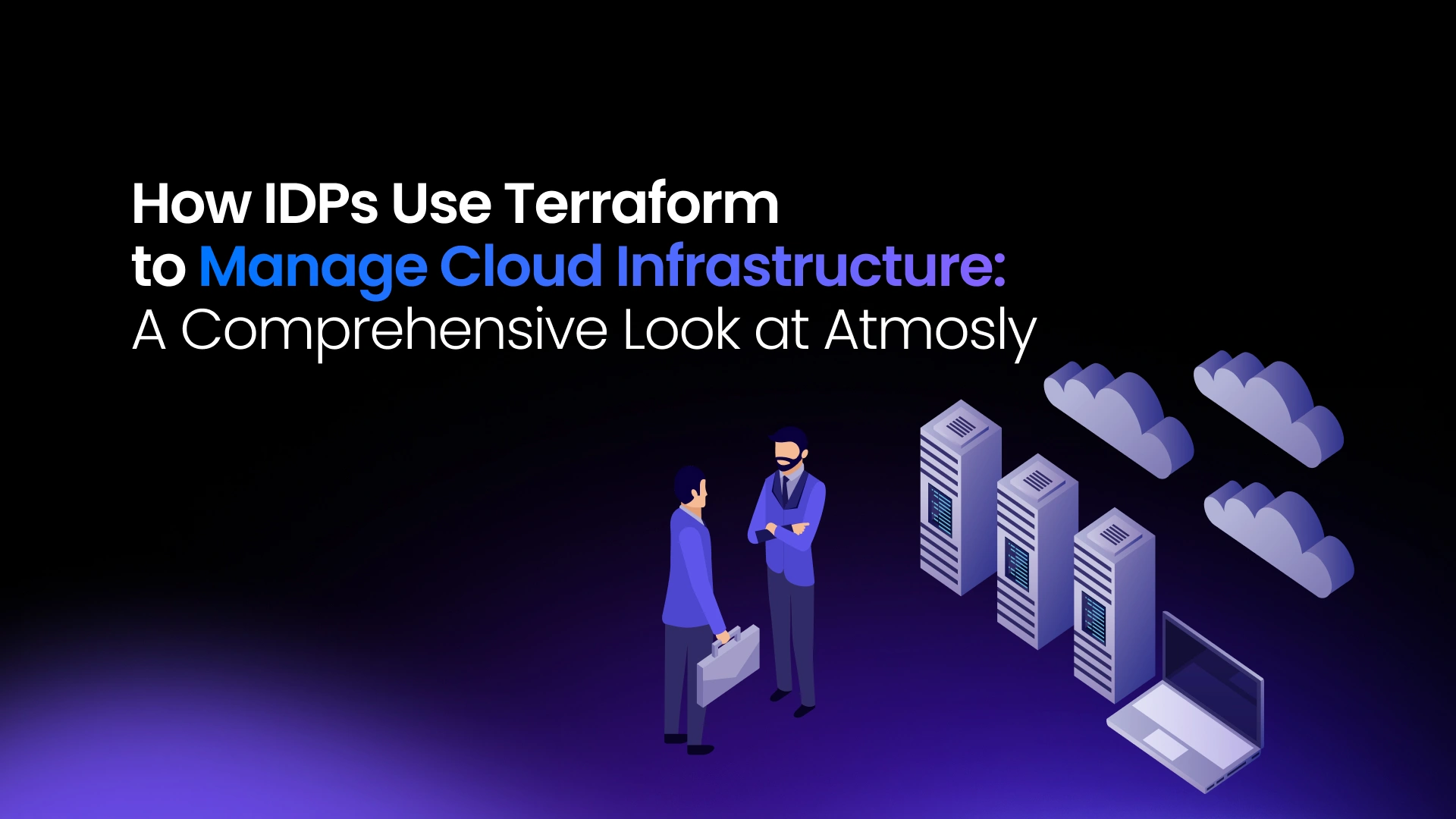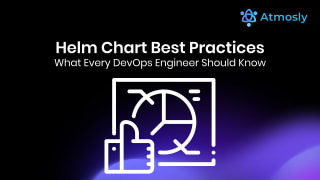
Managing cloud infrastructure in today’s multi-cloud, containerized world is a complex task for DevOps and cloud engineering teams. As organizations scale, they need robust solutions to ensure infrastructure consistency, automation, and scalability. Terraform, the leading Infrastructure-as-Code (IaC) tool, is a cornerstone for automating cloud provisioning across multiple cloud providers like AWS (Amazon Web Services), Google Cloud Platform (GCP), and Microsoft Azure.
However, while Terraform offers immense power, managing it manually can be challenging and complex. That’s where Atmosly, a self-service platform for cloud automation and DevOps enablement, steps in. Atmosly leverages Terraform automation to streamline and simplify infrastructure management, enabling DevOps teams to provision, monitor, and maintain cloud environments with ease. In this blog, we’ll take a detailed look at how Atmosly integrates Terraform into its platform, including its support for Kubernetes (EKS) cluster add-ons during deployments.
Simplifying Cloud Infrastructure Management with Atmosly
Traditionally, managing cloud infrastructure required multiple tools, manual configurations, and a significant amount of operational overhead. Atmosly simplifies these processes by combining Terraform with a user-friendly interface, allowing DevOps teams to focus on application deployment, infrastructure provisioning, and scaling applications without worrying about the complexity of cloud management.
Let’s explore how Atmosly manages cloud infrastructure through Terraform automation and the integration of Kubernetes add-ons.
Terraform Modules: The Core of Cloud Infrastructure
At the heart of Atmosly’s Terraform integration are Terraform modules, which abstract complex infrastructure configurations into reusable components. These components make it easy to manage key cloud services like:
- VPC (Virtual Private Cloud): A foundational layer for cloud networking, including IP address allocation, security rules, and subnet management.
- EKS (Elastic Kubernetes Service): A managed Kubernetes service that simplifies container orchestration.
- VPN (Virtual Private Network): Secure connectivity between on-premises networks and cloud environments.
- RDS (Relational Database Service): Managed database services without the hassle of setup, maintenance, and backups.
In Atmosly, these are default terraform modules & can be used and configured via a simple configuration. This flexibility allows DevOps teams to easily manage infrastructure components, with Terraform handling the complexity in the background. This reduces manual configurations and ensures cloud environments remain consistent and scalable.
Automating Cloud Infrastructure Deployment with Atmosly’s API
Once the necessary Terraform modules are selected, Atmosly takes over the entire cloud infrastructure deployment process through its API. This API-driven approach ensures that infrastructure provisioning is fully automated, removing the need for manual Terraform commands. With Atmosly, everything from scaling to resource provisioning is handled automatically, reducing the risk of human error and accelerating deployment times.
Atmosly doesn't just stop at executing the Terraform plan—it also includes built-in Cloud Checks to ensure everything is ready for deployment. Before initiating infrastructure provisioning, Atmosly runs pre-checks against the cloud account and region to verify that all necessary resources are available. These pre-checks ensure that there are no blockers during deployment and avoid failed provisioning attempts due to resource constraints.
For instance, Atmosly will check:
- VPCs (Virtual Private Clouds): Ensures there are available VPCs in the selected cloud region for the new infrastructure.
- EIPs (Elastic IPs): Verifies that enough Elastic IPs are available in the cloud account for allocation to new instances or services.
These pre-checks provide an added layer of assurance that all required resources—such as networking components, IP addresses, and security groups—are available and ready to be deployed. By ensuring cloud readiness, Atmosly saves teams from potential deployment failures, reducing downtime and improving deployment reliability.
Once these Cloud Checks pass, Atmosly moves forward with the API-driven deployment, automating infrastructure creation with the validated Terraform configuration.
Enhanced Kubernetes (EKS) Cluster Add-ons in Atmosly
Atmosly’s Kubernetes integration goes beyond simple provisioning. It provides a range of Kubernetes add-ons that enhance the functionality of your EKS clusters. These add-ons are integral to creating production-ready, scalable Kubernetes environments. Below are the key EKS add-ons Atmosly supports:
- Cert Manager: Automates TLS certificate issuance and management within your cluster, ensuring secure communication.
- PGL Stack: Includes Prometheus for monitoring, Grafana for visualization, and Loki for log aggregation, providing comprehensive observability for your Kubernetes environment.
- ArgoFlow: Integrates ArgoCD and Argo Workflows to enable GitOps and CI/CD automation for Kubernetes applications.
- K8S Dashboard: A web interface for managing and monitoring Kubernetes clusters, simplifying cluster administration.
- NGINX Ingress Controller: Manages routing for HTTP/S traffic to Kubernetes services.
- AWS EFS Storage Class: Provides persistent storage solutions by integrating AWS EFS (Elastic File System) with Kubernetes.
- Ingress ALB Controller: Manages AWS Application Load Balancers (ALB) for routing external traffic to services running within the cluster.
These Kubernetes add-ons ensure that not only is your Kubernetes cluster functional, but it is also optimized for performance, security, and scalability.
Multi-Cloud Deployments and Terraform State Management
Atmosly’s platform is designed to simplify multi-cloud deployments. Whether you're deploying infrastructure on AWS, Google Cloud, or Azure, Atmosly’s unified interface makes it easy to manage cloud resources across different environments. This flexibility is particularly valuable for organizations with hybrid cloud or multi-cloud strategies.
Atmosly also ensures infrastructure consistency through Terraform state management. Terraform state files are essential for tracking the current state of your cloud resources, allowing Atmosly to apply only necessary changes during future updates. The platform securely stores Terraform state files in cloud storage (e.g., AWS S3), providing a reliable and consistent way to manage cloud infrastructure.
Logging and Auditing with Terraform Logs
Infrastructure management requires complete visibility and accountability. Atmosly captures Terraform logs during deployment, providing comprehensive logging that allows teams to trace changes, troubleshoot issues, and maintain audit trails. These logs are especially valuable for compliance, auditing, and debugging.

With complete visibility into every infrastructure change, Atmosly helps teams meet security and operational requirements, while ensuring the observability needed to troubleshoot and optimize cloud environments.
Why Atmosly + Terraform is a Game-Changer for DevOps Teams
By integrating Terraform into its core platform, Atmosly transforms cloud infrastructure management, making it simpler, more automated, and scalable for DevOps teams. With Atmosly, DevOps professionals benefit from:
- Effortless multi-cloud infrastructure provisioning.
- End-to-end automation of Terraform workflows.
- Seamless Kubernetes add-on management for EKS clusters.
- Integrated CI/CD pipelines for containerized applications.
- Comprehensive Terraform logging for visibility and troubleshooting.
Atmosly’s self-service DevOps platform is built to enable teams to focus on developing applications and innovating, while the platform handles the heavy lifting of infrastructure deployment and management.
Conclusion: The Future of Terraform in Atmosly
As Atmosly continues to evolve, it remains at the cutting edge of Terraform automation, with plans to add even more support for new cloud services and advanced cloud orchestration tools. Whether you’re deploying infrastructure across AWS, GCP, or Azure, Atmosly’s ability to integrate and automate with Terraform ensures that teams can manage cloud infrastructure reliably and efficiently.
To learn more about Atmosly’s Terraform integration and Kubernetes support, visit our documentation or sign up for a free demo today.
By integrating Terraform’s Infrastructure-as-Code capabilities and supporting key Kubernetes add-ons, Atmosly offers a powerful solution for modern cloud infrastructure management. Teams can now deploy, manage, and scale infrastructure across multiple clouds with ease, making Atmosly an indispensable tool for DevOps automation.






